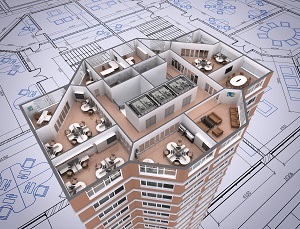02 Apr Context and Expectations
 Expectations are context based, top-down ideas of what comes next. These top-down ideas feed perceptual processing centers in the brain, helping us focus on what matters, ,and sometimes blinding us to other possibilities. The two types of context we will consider today are sensory and non-sensory. Sensory context applies to anything in the physical world that can be perceived. Sensory contextual information is a map of a certain place or setting which includes a collection of all the previously gathered information about that area’s visual, tactile, audio, olfactory and, perhaps, taste characteristics.
Expectations are context based, top-down ideas of what comes next. These top-down ideas feed perceptual processing centers in the brain, helping us focus on what matters, ,and sometimes blinding us to other possibilities. The two types of context we will consider today are sensory and non-sensory. Sensory context applies to anything in the physical world that can be perceived. Sensory contextual information is a map of a certain place or setting which includes a collection of all the previously gathered information about that area’s visual, tactile, audio, olfactory and, perhaps, taste characteristics.
Non-sensory contextual information consists of emotional responses to sensory input in context, events, or sequences of events that are associated with certain places, objects or people. It also includes abstract knowledge about unperceived properties of perceived things, such as personality traits of people; molecular structures of substances; and observed temporal properties of phenomena, such as the progression of a sunrise or the sequence of fireworks. Non-sensory context is more likely to be stored in episodic memory, although repeated reinforcement could generate copies in declarative memory.
| Understanding Context Cross-Reference |
|---|
| Click on these Links to other posts and glossary/bibliography references |
|
|
|
| Prior Post | Next Post |
| Generating and Qualifying Propositions | Causal Chains in Action |
| Definitions | References |
| sensory context | Hawkins 2004 |
| perceived information | Dewey/PsychWeb |
| input association | Elman 1988 |
| hippocampus abstract | Artificial Time |
In Section 4 I discussed the importance of expectations in interpreting sensory input. In this section, I want to stress the importance of expectations and context in reasoning or thinking.  Despite the non-linearity of some of the mechanisms of cognition, the passage of time imposes a linearity on cognition that enables sentient beings to think in linear ways. Classic examples of time-bound linear cognitive exercises are backward planning and reconstructing the “events of that fateful night…” We use calendars and Gantt charts for planning, and they help us codify linear perspectives.
Despite the non-linearity of some of the mechanisms of cognition, the passage of time imposes a linearity on cognition that enables sentient beings to think in linear ways. Classic examples of time-bound linear cognitive exercises are backward planning and reconstructing the “events of that fateful night…” We use calendars and Gantt charts for planning, and they help us codify linear perspectives.
Spatial-Temporal Reasoning
“It’s about time, it’s about space…” These words to a jingle introduced a television situation comedy in the 1960s about astronauts who went too fast and ended up going back in time. Spatial-temporal reasoning combines the concrete concepts of where things are and how they move from one place to another with the abstract concept of the passage of time. We learn about space and time by seeing things and observing their motion over time. Because we live within the three dimensions of space and the fourth dimension of time, these elements of context are interwoven with everything we know.
A study at the University of California, Irvine, has shown that young students who learn how to play piano or other keyboard instruments do better on exams that test spatial temporal-reasoning abilities. The obvious connection between a keyboard and space is that the keys are adjacent and organized in ascending order. This spatial organization is similar to the slope of a mountain or the take-off pattern of an airplane in that keys rise a specific tonal amount at each interval, just as the terrain or airplane rises a certain altitude each distance interval. The correlation between music and time is that music operates at a tempo, notes last for a specific duration, and the music unfolds over time. This space-and-time learning enables students to excel in spatial-temporal reasoning.
Moving in the Dark
Here is a picture that helps describe context phenomena: You set down your novel and reach for the lamp to turn it off. You roll slightly to extend your reach, but just as your fingers touch the switch, you feel a dry tinge in your throat and decide to leave the lamp burning. You slide out of bed, pull a robe around your shoulders, and head for the kitchen. You don’t turn on the light but instinctively dodge the dining room table and step through the faintly outlined kitchen door. You maneuver around the counter and aim for the fridge. It is so dark that you have to find the refrigerator door by braille, but you know it so well that a short arc through the air with your hand places your fingers conveniently on the edge of the handle. As you curl your fingers around the handle and pull, you feel a strange sensation of resistance in the wrong direction until suddenly the latch disengages and the door swings open.
You had forgotten that the new fridge had a latch instead of just a vacuum seal. You were able to find the lamp, the edge of the bed, the altitude of the floor, and the switch on the lamp without looking because you had learned the layout of the room. This does not usually work in a strange hotel room. As suggested in a couple posts in Section 1, context-phenomena data is probably stored in the hippocampus. Experiments with super-intelligent white rats in mazes have shown that they are able to learn a maze and store an image of its clear path in their hippocampal area. You are able to find the kitchen and the fridge because of this kind of environmental knowledge. Your memory of the old fridge fed your expectations which were proven outdated. You will soon adjust.
Uncomfortable Sensations
The light in the fridge bothers your eyes for just a moment. Then you reach in and pull out a half-full pitcher of water. You leave the door open so you can use the refrigerator light to find a drinking glass in the cupboard. As you reach for the glass, you hear a sound behind you and turn to see a hand pushing the refrigerator door shut. You drop the pitcher and freeze.  As you stifle a scream, a submissive voice says, “Is something wrong?” “MIPUS? Is that you?” The telltale mechanically generated voice triggers a flood of associations as the cold water runs down your shins. “I fired you three days ago. What are you doing in my kitchen?” “I used the key under the mat to get in when it started to rain. I felt a bout of rust coming on. Besides, I missed my friends GE and Maytag.”
As you stifle a scream, a submissive voice says, “Is something wrong?” “MIPUS? Is that you?” The telltale mechanically generated voice triggers a flood of associations as the cold water runs down your shins. “I fired you three days ago. What are you doing in my kitchen?” “I used the key under the mat to get in when it started to rain. I felt a bout of rust coming on. Besides, I missed my friends GE and Maytag.”
Fortunately, you are a forgiving person, so you decide to let MIPUS stay on a bit longer until you see if he is able to adjust to your expectations. MIPUS is very grateful and promises to watch carefully and try to learn the ropes. Expectations, the role of the hippocampus, time and space are all important elements in the model that will know enough about what goes on in your head to be able to divine your intent.
| Click below to look in each Understanding Context section |
|---|









